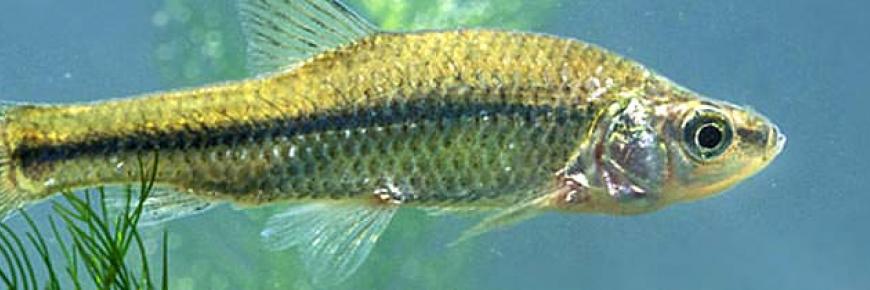Small Deer, Big Problems
 Muntjac deer (Muntiacus reevesi) are one of the oldest known deer species, first appearing 15-35 million years ago. Originating in Asia, they were introduced in the 1900s by John Russell Reeves from who they get part of their Latin name - reevesi. Muntjac deer spread across the UK and are now numerous across most of southern England.
Muntjac deer (Muntiacus reevesi) are one of the oldest known deer species, first appearing 15-35 million years ago. Originating in Asia, they were introduced in the 1900s by John Russell Reeves from who they get part of their Latin name - reevesi. Muntjac deer spread across the UK and are now numerous across most of southern England.
Muntjacs are the smallest deer species in the UK, measuring just 45 cm at the shoulder. They have russet-brown fur with black scent glands under both eyes and a characteristic tail which is held upright when the deer are startled to reveal a bright white underside. Startling a Muntjac deer may also cause it to make its distinctive loud barking call – you will often hear a Muntjac before you see one! The males also often have short, straight antlers and small tusk-like canines, although these may be difficult to spot from a distance.
Muntjac deer live in deciduous habitats or in coniferous woodland with shrubby areas. They prefer areas with dense cover and favour areas with diverse ground flora. They are generalists and are very adaptable - they are increasingly spotted in urban and suburban areas. They are able to use surprisingly small areas of shelter and can be seen in parks and gardens and even along roadside verges. Primarily browsers, they will graze the leaves and flowers of most plants. Muntjac will also “fell” taller plants by walking over them in order to be able to graze leaves normally out of their reach.
It is these feeding habitats which most frequently bring Muntjac deer into conflict with landowners and make them a conservation concern in the UK. Their preference for the most tender and succulent parts of young plants creates conflict with woodland managers, crop growers and gardeners. They are able to clear large areas of ground fauna, destroying habitat vital for birds, insets and small mammals and reducing biodiversity. Muntjac deer are very territorial: male deer make large scrapes on trees and fray on low branches using their tusks.
Adding to their problems is the ability of Muntjac to breed all year round, making them unique amongst other UK deer species. A young doe can conceive at less than a year old. In good condition, she can produce a fawn every seven months until she reaches her teens. As a consequence, Muntjac numbers have increased rapidly. They have no natural predators; therefore annual culls of up to 30% of the population are needed just to keep deer numbers stable. Even after intensive culls, Muntjac populations can quickly bounce back, therefore once population levels are under control, continued moderate culls are recommended.
Whilst it is unlikely Muntjac deer will ever be completely eradicated from theUK, they are not yet established in other European countries.Theford Forest in the east of England was recently host to a Belgian research party, visiting in order to learn from the UK case study of Muntjac Deer.

References
http://www.thedeerinitiative.co.uk/about_wild_deer/muntjac.php
http://www.arkive.org/reeves-muntjac/muntiacus-reevesi/
http://www.ultimateungulate.com/Artiodactyla/Muntiacus_reevesi.html
Photo Credits: Muntjac (AnimaisFotos), Muntjac (Peter aka anemoneprojectors)

